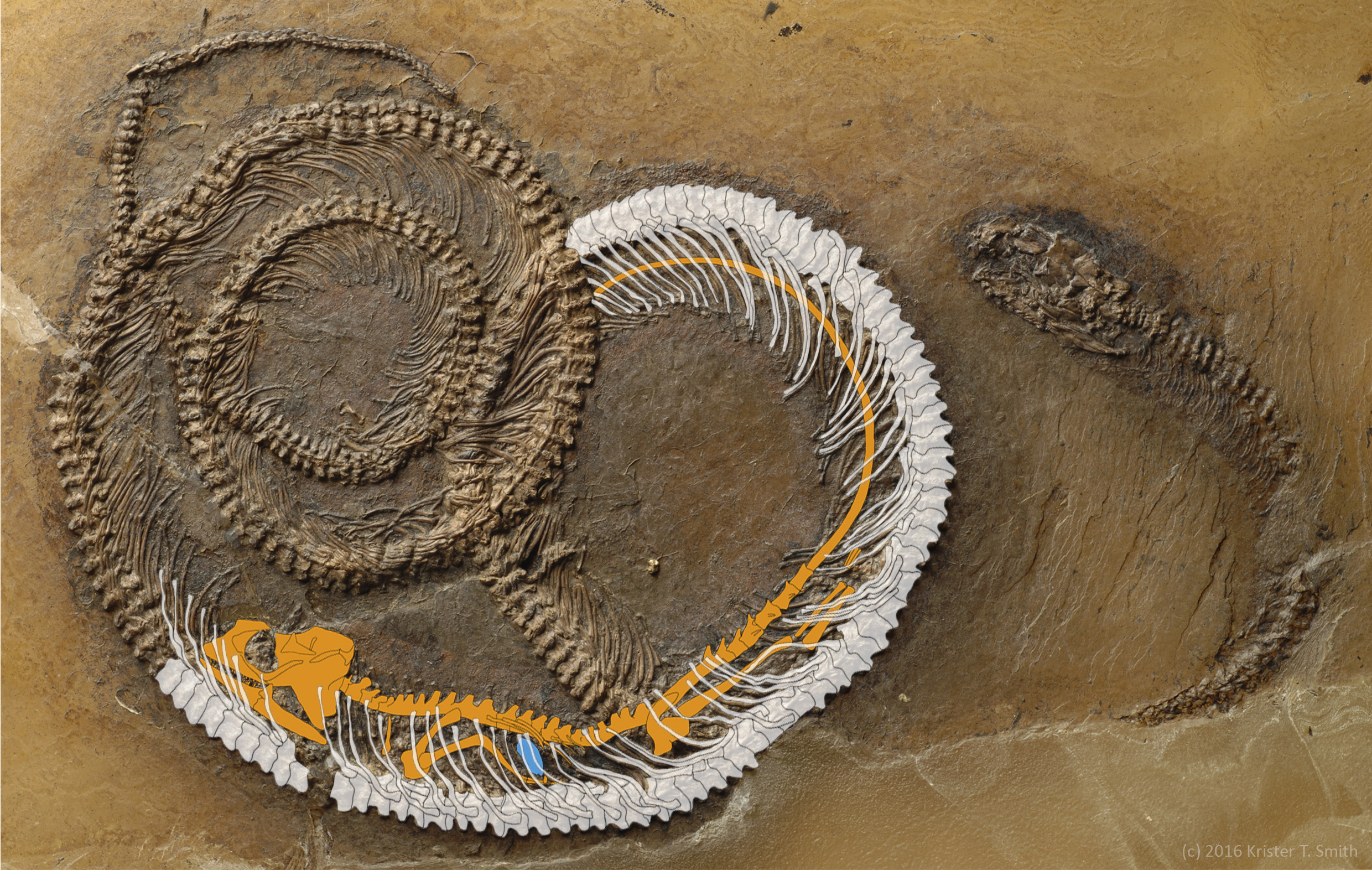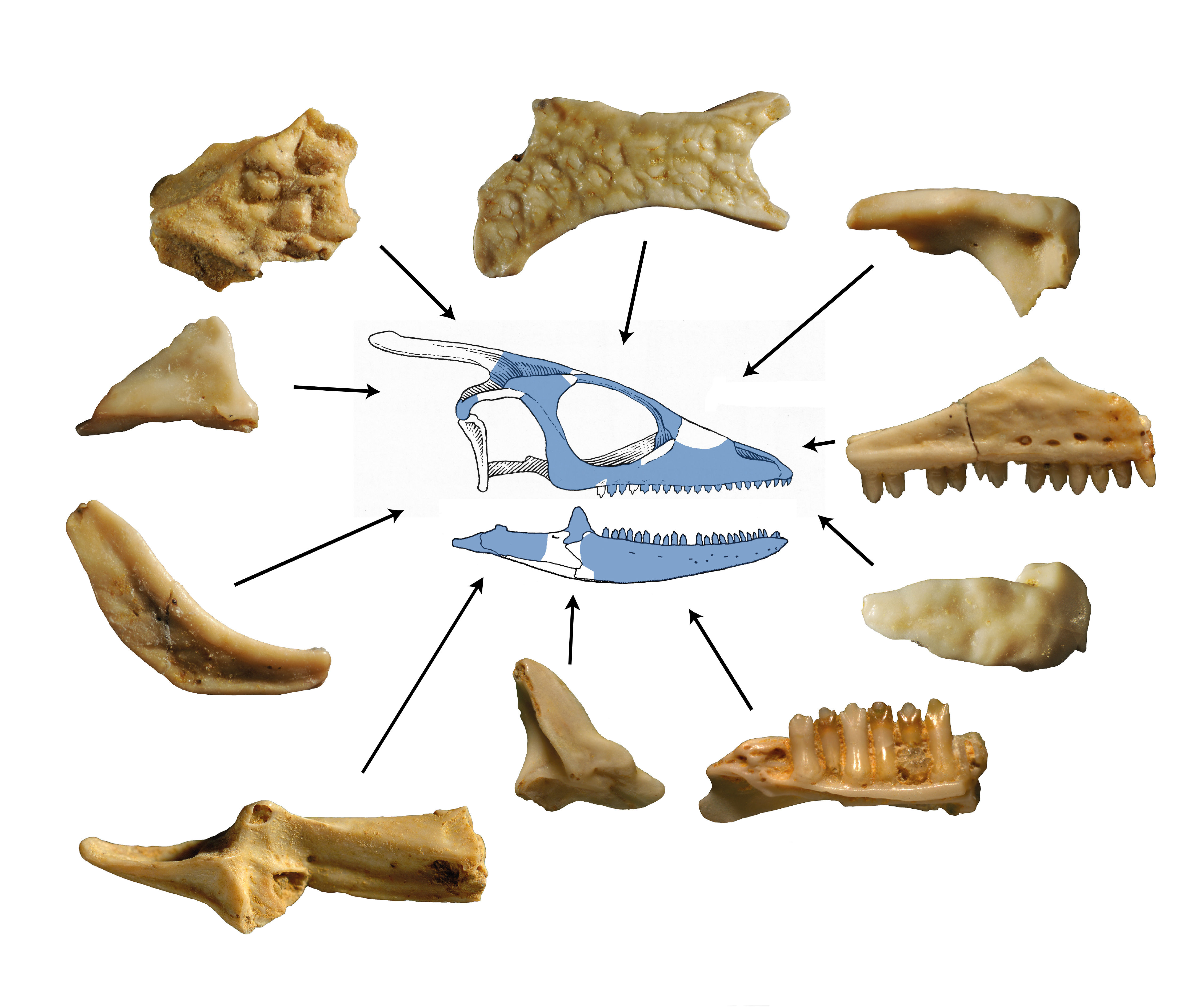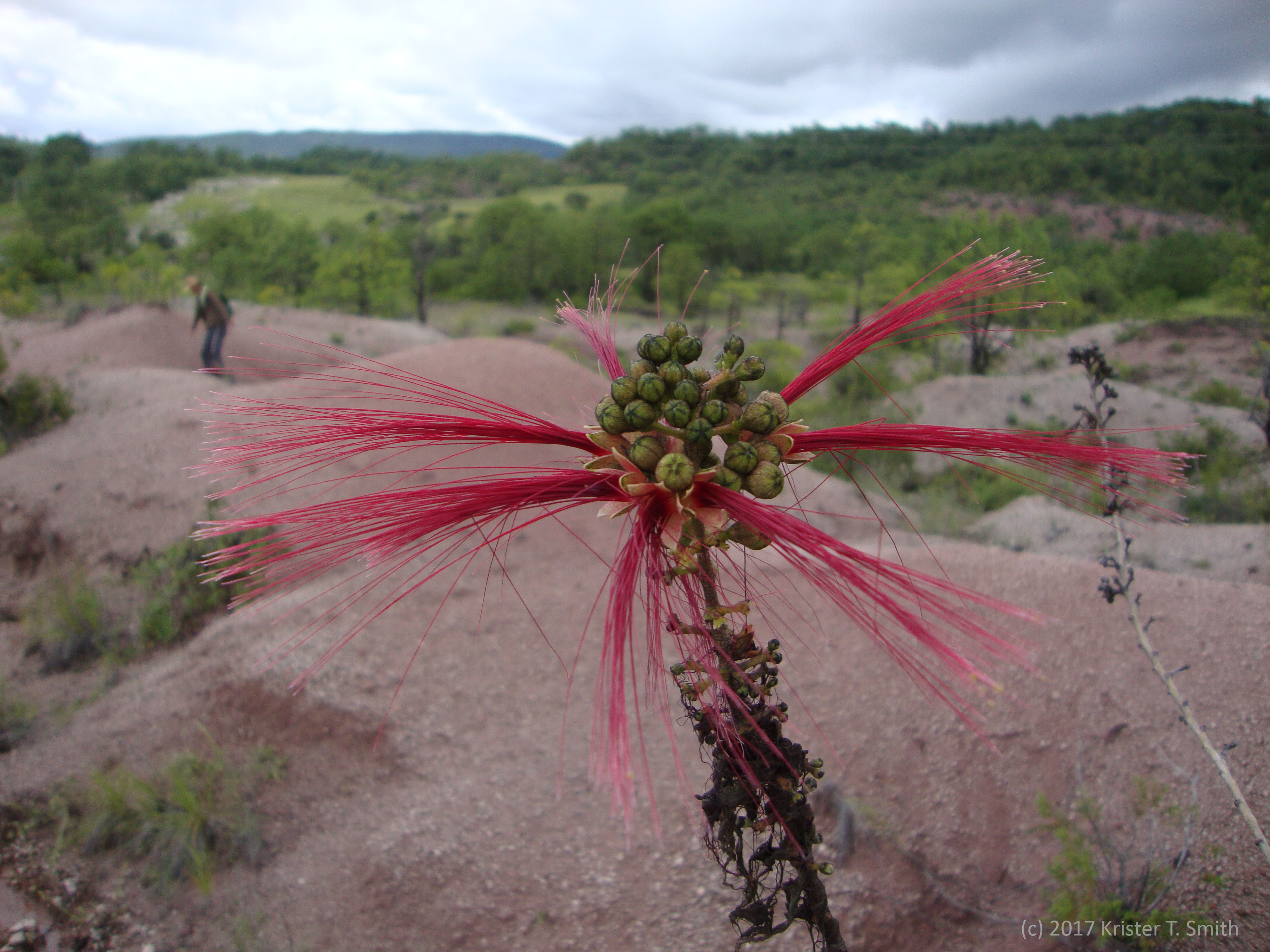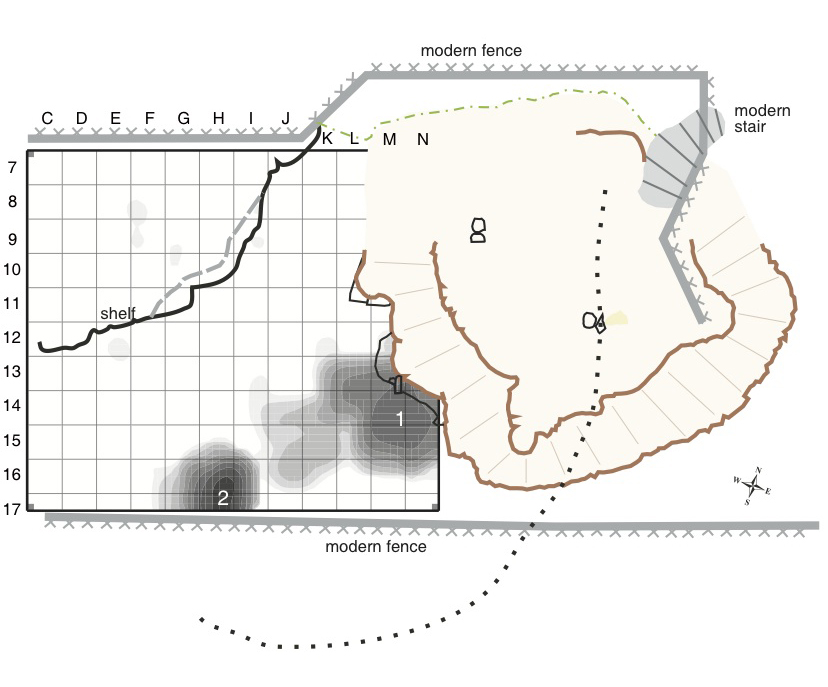Peer-reviewed journals
2023
Palci, A., S. Onary, M.S.Y. Lee, K.T. Smith, O. Wings, M. Rabi & G.L. Georgalis (2023) Eoconstrictor barnesi, a new booid snake from the Eocene (Lutetian) Konservat-Lagerstätte of Geiseltal, Germany. Zoological Journal of the Linnean Society 2023: zlad179. Get PDF
Georgalis, G.L., B. Mennecart & K.T. Smith (2023) First fossil record of Varanus (Reptilia, Squamata) from Switzerland and the earliest occurrences of the genus in Europe. Swiss Journal of Geosciences 116: 9. Get PDF
2022
Chuliver, M., A. Scanferla & K.T. Smith (2022) Live birth in a 47-million-year-old snake. The Science of Nature - Naturwissenschaften 109: 56. Get PDF
Smith, K.T. & A. Scanferla (2022) More than one large constrictor snake lurked around Paleolake Messel. Palaeontographica A (Paläozoologie) 323: 75-103. Get PDF
Smith, K.T., B.-A.S. Bhullar & J.I. Bloch (2022) New diminutive Eocene lizard reveals high K-Pg survivorship and taxonomic diversity of stem xenosaurs in North America. American Museum Novitates 3986: 1-36. Get PDF
2021
Smith, K.T. (2021) The Messel Pit: window into a greenhouse world. Geoconservation Research 4: 547-556. Get PDF
Georgalis, G.L., M. Rabi & K.T. Smith (2021) Taxonomic revision of the snakes of the genera Palaeopython and Paleryx (Serpentes, Constrictores) from the Paleogene of Europe. Swiss Journal of Paleontology 140: 18. Get PDF
Smith, K.T. (2021) It’s a bird, it’s a plane, it’s Oculudentavis! Current Biology 31: R950-R952. Get PDF
Smith, K.T., O. Comay, L. Maul, F. Wegmüller, J.M. Le Tensorer & T. Dayan (2021) A model of digestive tooth corrosion in lizards: experimental tests and taphonomic implications. Scientific Reports 11: 12877. Get PDF
Smith, K.T. & J. Habersetzer (2021) The anatomy, phylogenetic relationships, and autecology of the carnivorous lizard “Saniwa” feisti from the Eocene of Messel, Germany. Comptes Rendus Palevol 20(23): 441-506. Get PDF
Smith, K.T. & A. Scanferla (2021) A nearly complete skeleton of the oldest definitive erycine boid (Messel, Germany). Geodiversitas 43(1): 1-24. Get PDF
2020
Zaher, H. & K.T. Smith (2020) Pythons in the Eocene of Europe reveal a much older divergence of the group in sympatry with boas. Biology Letters 16(12): 20200735. Get PDF
Scanferla, A. & K.T. Smith (2020) Additional anatomical information on the Eocene minute boas Messelophis variatus and Rieppelophis ermannorum (Messel Formation, Germany). Vertebrate Zoology 70(4): 615-620. Get PDF
Georgalis, G.L. & K.T. Smith (2020) Constrictores Oppel, 1811 – the available name for the taxonomic group uniting boas and pythons. Vertebrate Zoology 70(3): 291-304. Get PDF
Scanferla, A. & K.T. Smith (2020) Exquisitely preserved snake fossils of Messel: insight into the evolution, biogeography, habitat preferences and sensory ecology of early boas. Diversity 12(3): 100. Get PDF
Palci, A., M. Hutchinson, M.W. Caldwell, K.T. Smith & M.S.Y. Lee (2020) The homologies and evolutionary reduction of the pelvis and hind limbs in snakes, with the first report of ossified pelvic vestiges in an anomalepidid (Liotyphlops beui). Zoological Journal of the Linnean Society 188(2): 630-652. Get PDF
2019
Čerňanský, A. & K.T. Smith (2019) The first juvenile specimen of Eolacerta (Squamata: Eolacertidae) from the early-middle Eocene of the Messel Pit (Germany). Comptes Rendus Palevol 18(7): 735-745. Get PDF
Smith, K.T., A. Schwermann & M. Wilmsen (2019) The oldest articulated mosasaurian remains (earliest Turonian) from Germany. Geologie und Paläontologie in Westfalen 91: 3-23. Get PDF
2018
Wedmann, S., D. Uhl, T. Lehmann, R. Garrouste, A. Nel, B. Gomez, K.T. Smith & S.F.K. Schaal (2018) The Konservat-Lagerstätte Menat (Paleocene; France) – an overview and new insights. Acta Geologica 16(2): 189-213. Get PDF
Smith, K.T., B.-A.S. Bhullar, G. Köhler & J. Habersetzer (2018) The only known jawed vertebrate with four eyes and the Bauplan of the pineal complex. Current Biology 28(7): 1101-1107. Get PDF Commentary
Kunin, W., J. Harte, F. He, R.T. Jobe, A. Ostling, C. Polce, A. Šizling, A.B. Smith, K.T. Smith, S. Smart, D. Storch, E. Tjørve, K.-I. Ugland, W. Ulrich & V. Varma (2018) Upscaling biodiversity: estimating the Species-Area Relationship from small samples. Ecological Monographs 88: 170-187. Get PDF
Čerňanský, A. & K.T. Smith (2018) Eolacertidae: a new extinct clade of lizards from the Palaeogene; with comments on the origin of the dominant European reptile group – Lacertidae. Historical Biology 30: 994-1014. Get PDF
Jiménez-Hidalgo, E., R. Guerrero-Arenas & K.T. Smith (2018) Gregorymys veloxikua, the oldest pocket gopher (Rodentia: Geomyidae), and the early diversification of Geomyoidea. Journal of Mammalian Evolution 25: 427-439. Get PDF
2017
Smith, K.T. (2017) The squamation of the Eocene stem-basilisk Geiseltaliellus maarius (Squamata: Iguanidae: Corytophaninae) from Messel, Germany. Salamandra 50: 519-530. Get PDF
Pokrant, F., C. Kindler, M. Vamberger, K.T. Smith & U. Fritz (2017) Grass snakes (Natrix natrix, N. astreptophora) mimicking cobras display a ‘fossil behavior.’ Vertebrate Zoology 67(2): 261-269. Get PDF
Smith, K.T. (2017) First crocodile-tailed lizard (Squamata: Pan-Shinisaurus) from the Paleogene of Europe. Journal of Vertebrate Paleontology 37: e1313743. Get PDF
2016
Smith, K.T. & A. Scanferla (2016) Fossil snake preserving three trophic levels and evidence for an ontogenetic dietary shift. Palaeobiodiversity and Palaeoenvironments 96: 589-599. Get PDF
Smith, K.T., L.C. Maul, F. Flemming, R. Barkai & A. Gopher (2016) The microvertebrates of Qesem Cave: A comparison of the two concentrations. Quaternary International 398: 233-245. Get PDF
Maul, L.C., A.A. Bruch, K.T. Smith, G. Shenbrot, R. Barkai & A. Gopher (2016) Palaeoecological and biostratigraphical implications of the microvertebrates of Qesem Cave. Quaternary International 398: 219-232. Get PDF
Ceríaco, L.M., E.E. Gutiérrez, A. Dubois et al. (2016) Photography-based taxonomy is inadequate, unnecessary, and potentially harmful for biological sciences. Zootaxa 4196: 435-445. Get PDF
Čerňanský, A.C., J. Klembara & K.T. Smith (2016) Fossil lizard from central Europe resolves the origin of large body size and herbivory in giant Canary Island lacertids. Zoological Journal of the Linnean Society 176: 861-877. Get PDF
Blasco, R., J. Rosell, K.T. Smith, L. Maul, P. Sañudo, R. Barkai & A. Gopher (2016) Tortoises as a dietary supplement for the Middle Pleistocene hominids of Qesem Cave, Israel. Quaternary Science Reviews 133: 165-182. Get PDF
Scanferla, C.A., K.T. Smith & S.F.K. Schaal (2016) Revision of the cranial anatomy and phylogenetic relationships of the Eocene minute boas Messelophis variatus and Messelophis ermannorum (Serpentes, Booidea). Zoological Journal of the Linnean Society 176: 182-206. Get PDF
2015
Maul, L.C., K.T. Smith, G. Shenbrot, A. Bruch, F. Wegmüller & J.-M. le Tensorer (2015) Microvertebrates from unit G/layer 17 of the archaeological site of Hummal (El Kowm, Central Syria). Preliminary results. Le Anthropologie 119: 676-686. Get PDF
Smith, K.T. & M. Wuttke (2015) Avian pellets from the late Oligocene of Enspel, Germany – ecological interactions in deep time. Palaeobiodiversity and Palaeoenvironments 95: 103-113. Get PDF
Jiménez-Hidalgo, E., K.T. Smith, R. Guerrero-Arenas & J. Alvarado-Ortega (2015) The first late Eocene continental faunal assemblage from tropical North America. Journal of South American Earth Sciences 57: 39-48. Get PDF
2014
Čerňanský, A.C., K.T. Smith & J. Klembara (2014) Variation in the position of the jugal medial ridge among lizards (Reptilia: Squamata): its functional and taxonomic significance. The Anatomical Record 297: 2262-2272. Get PDF
2013
Horáček, I., L.C. Maul, K.T. Smith, R. Barkai & A. Gopher (2013) Bat remains (Mammalia, Chiroptera) from the Middle Pleistocene site of Qesem Cave, Israel: first evidence of a Pleistocene fruit bat in the Near East. Palaeontologia Electronica 16.3.23A. Get PDF
Smith, K.T. & J.A. Gauthier (2013) Early Eocene lizards of the Wasatch Formation near Bitter Creek, Wyoming: diversity and paleoenvironment during an interval of global warming. Bulletin of the Peabody Museum of Natural History 54(2): 135-230. Get PDF [corrigendum]
Smith, K.T., L.C. Maul, R. Barkai & A. Gopher (2013) To catch a chameleon, or actualism vs. natural history in the taphonomy of the microvertebrate fraction at Qesem Cave, Israel. Jounal of Archaeological Science 40(8): 3326-3339. Get PDF
Smith, K.T. (2013) New contraints on the evolution of the snake clades Ungaliophiinae, Loxocemidae and Colubridae (Serpentes), with comments on the fossil history of erycine boids in North America. Zoologischer Anzeiger 252: 157-182. Get PDF
2012
Parham, J.F., P.C.J. Donoghue, C.J. Bell, T.D. Calway, J.J. Head, P.A. Holroyd, J.G. Inoue, R.B. Irmis, W.G. Joyce, D.T. Ksepka, J.S.L. Patane, N.D. Smith, J.E. Tarver, M. Van Tuinen, Z.H. Yang, K.D. Angielczyk, J. Greenwood, C.A. Hipsley, L. Jacobs, P.J. Mackovicky, J. Müller, K.T. Smith, J.M. Theodor, R.C.M. Warnock & M.J. Benton (2012) Best practices for applying paleontological data to molecular divergence dating analyses. Systematic Biology 61: 346-359. Get PDF
Smith, K.T. & M. Wuttke (2012) From tree to shining sea: Taphonomy of the arboreal lizard Geiseltaliellus maarius from Messel, Germany. Palaeobiodiversity and Palaeoenvironments 92(1): 45-65. Get PDF
2011
Smith, K.T. (2011) The phylogenetic affinity of the fossil agamid lizard Tinosaurus. Bonner Zoologische Monographien 57: 9-28. Get PDF
Smith, K.T. (2011) The long-term history of dispersal among lizards in the early Eocene: New evidence from a microvertebrate assemblage in the Bighorn Basin of Wyoming, U.S.A. Palaeontology 54(6): 1243-1270. Get PDF
Smith, K.T. (2011) Oreithyia, a replacement name for Orithyia Smith, 2011, nec Orithyia Fabricius, 1798. Bulletin of the Peabody Museum of Natural History 52(2): 273. Get PDF
Smith, K.T. (2011) The evolution of mid-latitude faunas during the Eocene: Late Eocene lizards of the Medicine Pole Hills reconsidered. Bulletin of the Peabody Museum of Natural History 52(1): 3-105. Get PDF
Maul, L., K.T. Smith, R. Barkai, A. Barash, P. Karkanas, R. Shahack-Gross & A. Gopher (2011) Microfaunal remains at Middle Pleistocene Qesem Cave, Israel: preliminary results on small vertebrates, environment and biostratigraphy. Journal of Human Evolution 60(4): 464-480. Get PDF
Smith, K.T., S. Schaal, W. Sun & C.T. Li (2011) Acrodont iguanians (Squamata) from the middle Eocene of the Huadian Basin of Jilin Province, China, with a critique of the taxon “Tinosaurus”. Vertebrata PalAsiatica 49(1): 69-84. Get PDF
2009
Smith, K.T. (2009) Eocene lizards of the clade Geiseltaliellus from Messel and Geiseltal, Germany, and the early radiation of Iguanidae (Reptilia: Squamata). Bulletin of the Peabody Museum of Natural History 50(2): 219-306. Get PDF
Smith, K.T. (2009) A new lizard assemblage from the earliest Eocene (zone Wa0) of the Bighorn Basin, Wyoming, U.S.A.: Biogeography during the warmest interval of the Cenozoic. Journal of Systematic Palaeontology 7(3): 299-358. Get PDF [corrigendum]
2008
Smith, K.T. (2008) On the measurement of beta diversity: An analog of the species–area relation for point sources. Evolutionary Ecology Research 10(7): 987-1006. Get PDF
Ifrim, C., M.-C. Buchy, K.T. Smith & S. Giersch (2008) Paleoenvironment and preliminary description of early Turonian (Late Cretaceous) aquatic squamates from Vallecillo, north-eastern Mexico. Fort Hays Studies 3: 47-62. Get PDF
Smith, K.T., B.-A.S. Bhullar & P.A. Holroyd (2008) Earliest African record of the Varanus stem-clade (Squamata: Varanidae) from the early Oligocene of Egypt. Journal of Vertebrate Paleontology 28(3): 909-913. Get PDF
Bhullar, B.-A.S. & K.T. Smith (2008) A helodermatid dentary from the Miocene of Florida, the evolution of the dentary in Helodermatidae, and comments on dentary morphology in Varanoidea. Journal of Herpetology 42(2): 286-302. Get PDF
Smith, K.T. & M.-C. Buchy (2008) A new aigialosaur (Squamata: Anguimorpha) with soft-tissue preservation from the Upper Cretaceous of Nuevo León, Mexico. Journal of Vertebrate Paleontology 28(1): 85-94. Get PDF
2006
Smith, K.T. (2006) A diverse new assemblage of late Eocene squamates (Reptilia) from the Chadron Formation, North Dakota, U.S.A. Palaeontologia Electronica 9.2.5A. Get PDF
2005
Stinnesbeck, W., C. Ifrim, H. Schmidt, A. Rindfleisch, M.-C. Buchy, E. Frey, A. H. González González, H. Porras-Muzquiz, L. Cavin & K.T. Smith (2005) A new lithographic limestone deposit in the Upper Cretaceous Austin Group at El Rosario, county of Múzquiz, Coahuila, northeastern Mexico. Revista Mexicana de Ciencias Geológicas 22: 401-418. Get PDF
Buchy, M.-C., K.T. Smith, E. Frey, W. Stinnesbeck, A. H. González González, C. Ifrim, J. G. López-Oliva & H. Porras-Muzquiz (2005) Annotated catalogue of marine squamates (Reptilia) from the Upper Cretaceous of northeastern Mexico. Netherlands Journal of Geosciences 84: 195-206. Get PDF
2003
Smith, K.T. & P.A. Holroyd (2003) Rare taxa, biostratigraphy, and the Wasatchian-Bridgerian boundary in North America. Geological Society of America Special Paper 369: 501-511. Get PDF
2001
Smith, K.T. (2001) Reassessing the Lambdotherium first appearance datum (Wasatchian, early Eocene) in the Bighorn Basin, Wyoming. PaleoBios 21: 1-11. Get PDF
1999
Guralnick, R. & K. Smith (1999) Historical and biomechanical analysis of integration and dissociation in molluscan feeding, with special emphasis on the true limpets (Patellogastropoda: Gastropoda). Journal of Morphology 241: 175-195. Get PDF
Books
Smith, K.T., S.F.K. Schaal & J. Habersetzer, eds. (2018) Messel: An Ancient Greenhouse Ecosystem. Schweizerbart, Stuttgart. Get book
Schaal, S.F.K., K.T. Smith & J. Habersetzer, eds. (2018) Messel: Ein fossiles Tropenökosystem. Schweizerbart, Stuttgart. Get book
Book chapters
Smith, K.T. & G. Georgalis (2022) The diversity and distribution of Palaeogene snakes: A review, with comments on vertebral sufficiency; pp. 55-84 in press in D. Gower & H. Zaher (eds.). The Origin and Early Evolutionary History of Snakes (Systematics Association Special Volume 90). Cambridge University Press, Cambridge, U.K. Get book Appendix 1: Catalog of Paleogene Snakes Appendix 2: Complete List of Paleogene Snake Occurrences
Smith, K.T. (2020) Pan-Iguania; pp. 1145-1148 in K. de Queiroz, P.D. Cantino & J.A. Gauthier (eds.), Phylonyms: A Companion to the PhyloCode. CRC Press, Boca Raton, Florida.
Smith, K.T. (2020) Pan-Iguanidae; pp. 1155-1158 in K. de Queiroz, P.D. Cantino & J.A. Gauthier (eds.), Phylonyms: A Companion to the PhyloCode. CRC Press, Boca Raton, Florida.
Smith, K.T. (2020) Pan-Acrodonta; pp. 1165-1168 in K. de Queiroz, P.D. Cantino & J.A. Gauthier (eds.), Phylonyms: A Companion to the PhyloCode. CRC Press, Boca Raton, Florida.
Smith, K.T. (2019) The evolution of Helodermatidae; pp. 62-67 in H.-J. Schwandt (ed.), The Gila Monster: Heloderma suspectum. Chimaira, Frankfurt am Main.
Smith, K.T. (2019) Heloderma in der Evolution; pp. 62-67 in H.-J. Schwandt (ed.), Die Gila-Krustenechse: Heloderma suspectum. Chimaira, Frankfurt am Main.
Uhl, D., L. Kunzmann, C. Hertler, R.-D. Kahlke, J.-A. Keiler, P. Königshof, O. Kullmer, S. Schaal, K. Smith, M.M. Solórzona Kraemer, M. Stebich, O. Tietz & M. Wilmsen (2018) Frankfurt/Dresden/Görlitz: palaeontological collections of the Senckenberg Gesellschaft für Naturforschung; pp. 209-240 in L.A. Beck & U. Joger (eds.), Paleontological Collections of Germany, Austria and Switzerland. Springer, Heidelberg.
Wedmann, S., J. Habersetzer, T. Lehmann, I. Ruf, S.F.K. Schaal & K.T. Smith (2018) Messel research – methods und concepts; pp. 34-41 in K.T. Smith, S.F.K. Schaal & J. Habersetzer (eds.), Messel: An Ancient Greenhouse Ecosystem. Schweizerbart, Stuttgart.
Smith, K.T., A. Čerňanský, A. Scanferla & S.F.K. Schaal (2018) Lizards and snakes – warmth-loving sunbathers; pp. 122-147 in K.T. Smith, S.F.K. Schaal & J. Habersetzer (eds.), Messel: An Ancient Greenhouse Ecosystem. Schweizerbart, Stuttgart.
Cadena, E.A., W.G. Joyce & K.T. Smith (2018) Turtles – armored survivalists; pp. 148-157 in K.T. Smith, S.F.K. Schaal & J. Habersetzer (eds.), Messel: An Ancient Greenhouse Ecosystem. Schweizerbart, Stuttgart.
Smith, K.T., T. Lehmann, G. Mayr, N. Micklich, R. Rabenstein & S. Wedmann (2018) The Messel ecosystem; pp. 302-313 in K.T. Smith, S.F.K. Schaal & J. Habersetzer (eds.), Messel: An Ancient Greenhouse Ecosystem. Schweizerbart, Stuttgart.
Wedmann, S., J. Habersetzer, T. Lehmann, I. Ruf, S.F.K. Schaal & K.T. Smith (2018) Messelforschung – Methoden und Begriffe; pp. 34-41 in S.F.K. Schaal, K.T. Smith & J. Habersetzer (eds.), Messel: Ein fossiles Tropenökosystem. Schweizerbart, Stuttgart.
Smith, K.T., A. Čerňanský, A. Scanferla & S.F.K. Schaal (2018) Echsen und Schlangen – wärmeliebene Sonnenanbeter; pp. 122-147 in S.F.K. Schaal, K.T. Smith & J. Habersetzer (eds.), Messel: Ein fossiles Tropenökosystem. Schweizerbart, Stuttgart.
Cadena, E.A., W.G. Joyce & K.T. Smith (2018) Schildkröten – gepanzerte Überlebenskünstler; pp. 148-157 in S.F.K. Schaal, K.T. Smith & J. Habersetzer (eds.), Messel: Ein fossiles Tropenökosystem. Schweizerbart, Stuttgart.
Smith, K.T., T. Lehmann, G. Mayr, N. Micklich, R. Rabenstein & S. Wedmann (2018) Das Messeler Ökosystem; pp. 302-313 in S.F.K. Schaal, K.T. Smith & J. Habersetzer (eds.), Messel: Ein fossiles Tropenökosystem. Schweizerbart, Stuttgart.
Buchy, M.-C. & K.T. Smith (2011) New portions of the holotype of Vallecillosaurus donrobertoi (Squamata, Mosasauroidea) from the early Turonian (Upper Cretaceous) of Mexico; pp. 47–55 in J. Calvo, J. Porfiri, B. Gonzalez Riga & D. Dos Santos (eds.), Paleontología y dinosaurios desde América Latina. Universidad Nacional de Cuyo, Mendoza, Argentina.
Popular science
Chuliver, M., A. Scanferla & K.T. Smith (2024) Messelophis variatus: a boa that gave birth to live young. Senckenberg Annual Report 2022-2023: 15.
Smith, K.T. (2021) Messel. In: Encyclopaedia of Life Sciences. John Wiley and Sons, Chichester. Get PDF
Smith, K.T. (2020) Rageryx schmidi: Neu beschriebene Messel-Art ehrt Dietmar Schmid. Natur – Forschung – Museum 150: 177-179.
Smith, K.T. & A. Schwermann (2019) Die ältesten artikulierten Mosasaurier-Überreste aus Deutschland. Archäologie in Westfalen-Lippe 2018: 26-28.
Smith, K.T. (2018) Lizards and skeletons. Flicker Bulletin 36.
Franzen, J.L., K. Smith & J. Habersetzer (2017) Krokodil gegen Urpferd. Natur – Forschung – Museum 147(1/2): 34-43.
Smith, K.T. (2016) Eat [and] be eaten: the ancient ecosystem of Messel. pp. 102-105 in The Munich Show. Hidden Treasures of the Museums. Wachholtz, Kiel.
Cadena, E. & K.T. Smith (2016) Vorstoß ins Mark: REM-Technologie macht 48 Millionen Jahre alte Knochenzellen und Blutgefäße sichtbar. Natur – Forschung – Museum 146(3/4): 78-85.
Maul, L.C. & K.T. Smith (2014) Von Mäusen, Echsen und Menschen. Natur – Forschung – Museum 144(7/8): 284-285.
Smith, K.T. & S. Wedmann (2013) Unerforschte Vielfalt in der Grube Messel. Natur – Forschung – Museum 143(7/8): 230-235.
Smith, K.T. (2010) Ein außergewöhnlicher Fund aus der Grube Messel. Senckenberg Jahrbuch 2007-2008: 35.

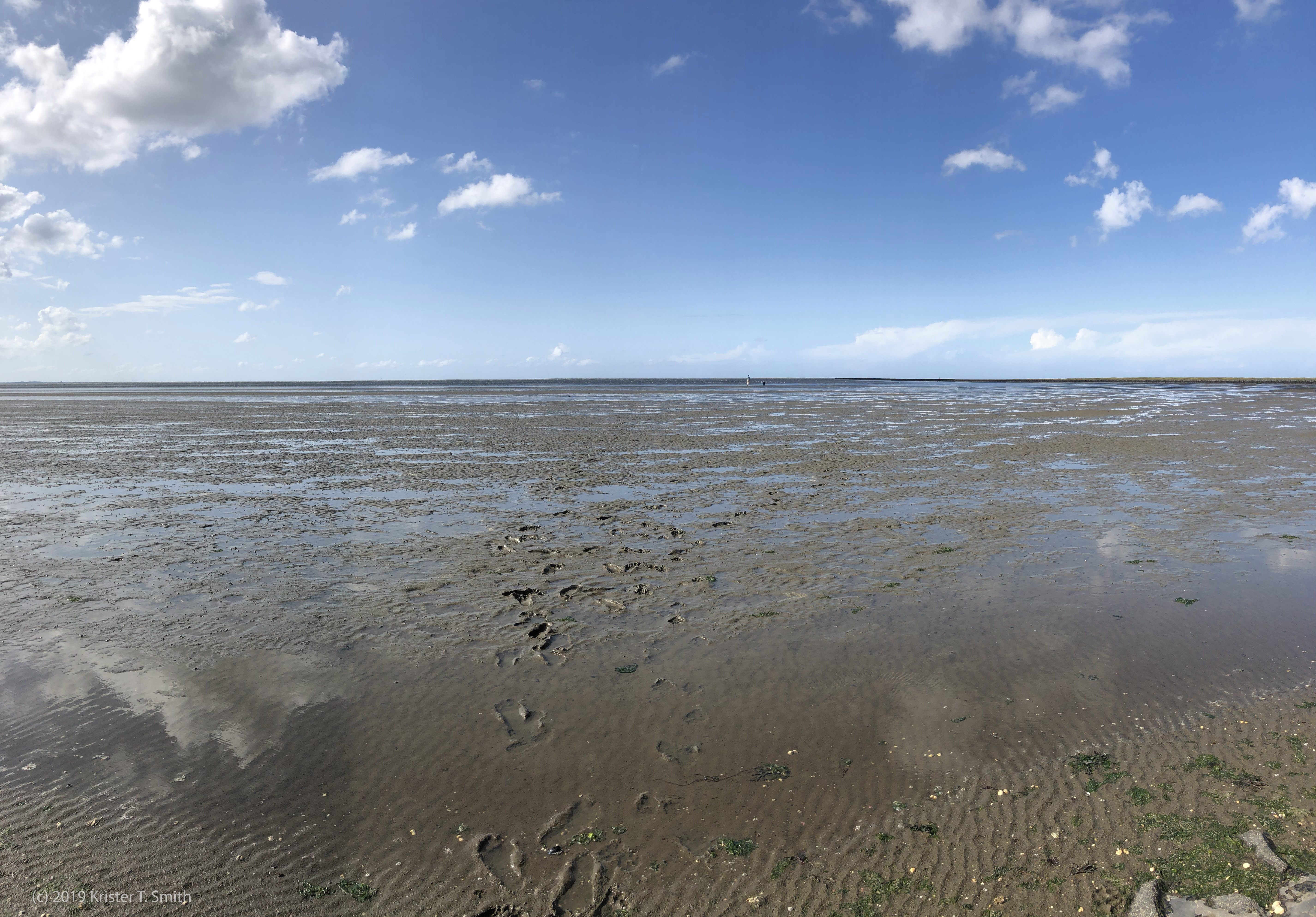
 0000-0003-1442-2944
0000-0003-1442-2944